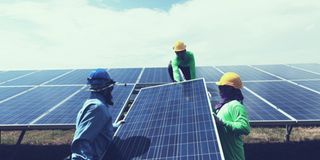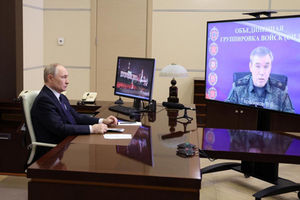Renewable energy jobs drop in Africa

What you need to know:
- Data from Irena shows that installed capacity of renewable energy in Africa increased by 18 percent to 63,034MW in 2022, while investments in the sector rose 44 percent in five years to $13 billion as of 2021, but jobs dropped from the 322,000 recorded in 2018.
Investments in Africa’s renewable energy sector over the last five years have failed to deliver a growth in employment in the industry, deviating from trends globally.
The latest annual Renewable Energy and Jobs report published by the International Labour Organisation (ILO) and the International Renewable Energy Agency (Irena) reveals that in 2022, only 320,000 Africans were employed by the sector, a 0.6 percent drop from 2018.
This is despite a consistent growth in the installed capacity of renewable energy as well as more investments over the last five years, signalling a failure of the green transition to create more jobs in Africa.
Data from Irena shows that installed capacity of renewable energy in Africa increased by 18 percent to 63,034MW in 2022, while investments in the sector rose 44 percent in five years to $13 billion as of 2021, but jobs dropped from the 322,000 recorded in 2018.
Globally, jobs in the renewable energy sector have been rising consistently with increased investment and installed capacity, which justifies continued investments and transition to cleaner energy sources.
According to the report, in 2022, there were over 13.7 million people working in the clean energy space, a 24.5 percent increase from the 11 million reported in 2018, and nearly double the 7.3 million in 2012.
Latest statistics from the International Energy Agency (IEA) also show that in the five years to December 2021, investments in the global renewable energy sector rose by 19.5 percent to $382 billion.
At the same time, the global installed capacity of the clean energy sources hit a record high of 3.09 million MW in 2022, a growth of over 30 percent since 2018, reflecting the rise in investments, hence more jobs.
“We can expect the creation of many millions of additional jobs in the coming years and decades, provided that education and skills development programmes are appropriately expanded, workforce development programmes are put in place, and labour markets respond to evolving needs,” said Irena’s director-general Francesco La Camera and his ILO counterpart Gilbert Houngbo in a joint statement.
"Nevertheless, La Camera and Houngbo noted that “today’s renewable energy jobs are concentrated in a relatively small number of countries, reflecting the uneven geographic footprint of equipment manufacturing and capacity installations.”
Based on the latest statistics, over 58 percent of those employed in the renewable energy sector are in China, Brazil, the US and India, while Africa has just 2.3 percent of the global clean energy jobs.
The top four countries are also the leading in installed capacity of renewable energy, with a total of 1.918 million MW, accounting for over 61 percent of total of global capacity.
But in Africa, there is little manufacturing of renewable energy equipment like solar panels, wind or water turbines, meaning that skilled direct jobs may not be as much.
Rebekah Shirley, deputy director for Africa at research non-profit World Resources Institute (WRI), argues that although most of the manufacturing happens outside Africa, the renewable energy sector still should ideally create more jobs as capacity increases.
“We don’t control much of the supply chain of renewables so where you find most jobs is China and India where manufacturing happens, but that’s not to suggest there aren’t jobs created in Africa through renewables,” she told The EastAfrican.
According to Dr Shirley, the most jobs created by renewable energy on the continent are downstream induced, meaning that they come from the benefits of having renewable energy installed, and indirect upstream, that come from the supply chains of raw materials for RE equipment manufacturing.
“Renewables are very low-maintenance technology, so you can expect that there aren’t many jobs involved in the maintenance. And so it’s these indirect upstream and induced downstream jobs that are really the places to be looking,” she said.
Since the data produced by ILO and Irena primarily focuses on direct jobs created by the renewable energy sector, it is possible that they don’t capture the induced and indirect employments supported by the industry.
For example, a separate report produced by global non-profit Power for All estimated that Kenya had 49,572 renewable energy jobs in 2021, almost 10,000 more than the figure estimated by Irena.
“Estimates are produced basically using what we call multipliers, but we of course know that the realities on the ground are much different in a number of ways, and not least of which is the fact that indirect and informal jobs are often not captured in the numbers,” Dr Shirley said.



